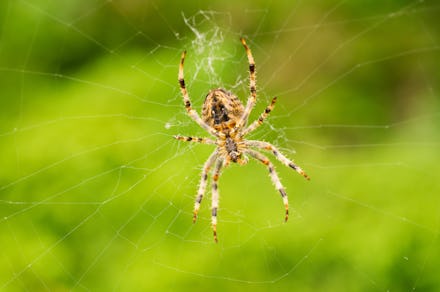Another reason to fear extreme weather: it's making spiders more hostile

Spiders are some of the most unwelcome creepy-crawlies humans must live alongside. Sure, some are harmless. But others? They can kill you with a ridiculously small amount of venom from their ferocious bite. With that in mind, the news that weather events such as hurricanes and tropical cyclones could be making spiders more aggressive probably won't sit well with you.
According to researchers at McMaster University in a new study published in Nature Ecology & Evolution, recent studies of spider behaviors have identified an evolutionary impact on certain populations of arachnids living in regions more prone to storms and other dangerous weather situations. In these areas, high winds can knock down trees, blow errant debris into spider nests, and create a volatile environment for spiders to attempt to survive in. As a result, some end up becoming more prone to aggressive behaviors in an attempt to better gather resources and keeping themselves and their colonies safe.
"It is tremendously important to understand the environmental impacts of these 'black swan' weather events on evolution and natural selection," said journal lead author Jonathan Pruitt, an evolutionary biologist. He worked alongside a team that examined a variety of female spider colonies of the Anelosimus studiosus species, which can be found along the Gulf and Atlantic coasts. Coincidentally, those are areas typically affected by hurricanes and other devastating weather events. They worked to figure out the trajectory the storms may move in, and sampled nearly 300 different colonies from the area to compare them to control sites elsewhere.
The findings for this species, which typically features both docile and aggressive spiders, suggested that following a tropical cyclone or storm, the colonies with more aggressive foraging responses would have more young spiders survive into winter. This is due to the fact that aggressive spiders are better at collecting resources and are also prone to potentially cannibalizing male spiders and their eggs in an effort to survive. These findings were magnified in colonies along the areas in the path of the storms.
The trend of these aggressive spiders found along the areas affected by storms tended to be consistent across several storms throughout different durations and sizes. According to Pruitt, this means the changes in aggression the spiders have shown are indeed "robust evolutionary responses" to their environmental stimuli.
What does this mean for humans going forward? Nothing too alarming just yet, but over time it certainly could signal a different type of behavior in spiders that live along these coastlines and paths in storms that could be damaging to the species. And with extreme weather events on the rise, due to climate change, it's best to probably go ahead and continue avoiding spiders like you already do, just in case.